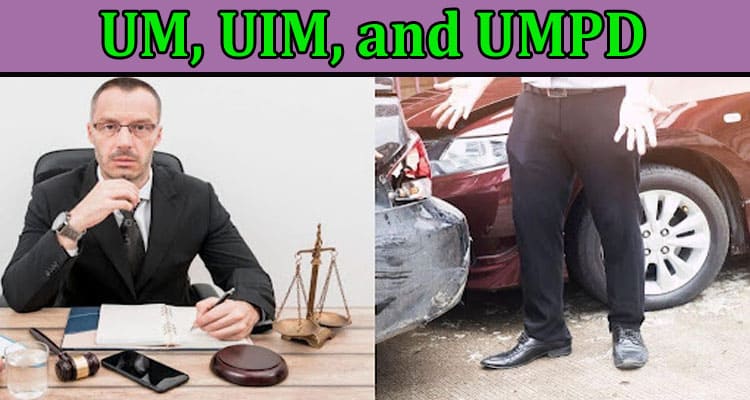Car insurance policies can often feel like they’re written in a language only aliens understand. That’s what we’re here for. Today we’re delving deep into the world of three mysterious abbreviations: UM, UIM, and UMPD. These terms may seem like jargon, but understanding them is crucial for protecting yourself on the road.
There are facts about these terms that you need to know to navigate the complex world of insurance coverage. An experienced lawyer can help you understand these words and more. Click here to know more about how a lawyer can help you in a car accident case.
And now, let’s break them down and translate them into plain English.
UM: Uninsured Motorist Coverage
We’ll use a practical example to explain these coverages. As for UM, imagine you’re cruising down the road, following all the rules, when suddenly, out of nowhere, an uninsured driver crashes into you. Not only are you left dealing with the stress of the accident, but you’re also faced with the financial burden of repairs and medical bills. This is where UM coverage comes to the rescue.
UM coverage is your safety net in situations where the at-fault driver lacks insurance. It steps in to cover your medical expenses, lost wages, and even pain and suffering. Essentially, UM acts as your financial airbag, protecting you from the consequences of someone else’s irresponsibility.
Key Points to Note About UM:
- Availability: UM coverage varies by state; some states mandate it, while others offer it as an optional add-on to your policy.
- Cost: Generally, UM coverage is affordable, but premiums can vary based on your coverage limits and location.
- Benefits: UM provides peace of mind, ensuring you’re protected even if the other driver is uninsured.
UIM: Underinsured Motorist Coverage
Now, let’s consider a different scenario. The driver who hits you does have insurance, but their coverage falls short of covering all your damages. This is where Underinsured Motorist (UIM) coverage comes into play, acting as a backup plan for when the other driver’s coverage is insufficient.
UIM coverage kicks in when the at-fault driver’s insurance limits aren’t enough to cover your expenses. It bridges the gap between their coverage and your actual costs, ensuring you’re not left shouldering the financial burden alone.
Key Points to Note About UIM
- Availability: Similar to UM, UIM coverage availability varies by state.
- Cost: UIM coverage tends to be slightly more expensive than UM, but it’s a worthwhile investment considering the potential financial strain it can alleviate.
- Benefits: UIM protects you from situations where the at-fault driver has some insurance but not enough to cover your damages fully.
UMPD: Uninsured/Underinsured Motorist Property Damage
Lastly, let’s talk about protecting your vehicle. Uninsured/Underinsured Motorist Property Damage (UMPD) coverage is like the cousin of UM and UIM, but its focus is on safeguarding your car rather than covering medical expenses and lost wages.
If an uninsured or underinsured driver damages your vehicle, UMPD steps in to cover the repair or replacement costs. It serves as a shield for your precious ride, ensuring you’re not left footing the bill for someone else’s mistake.
Key Points to Note about UMPD:
- Availability: While not as widely available as UM and UIM, UMPD coverage is gaining popularity.
- Cost: UMPD coverage is typically cheaper than UM or UIM, but the cost can still vary depending on your coverage limits.
- Benefits: UMPD protects your car from financial losses caused by uninsured or underinsured drivers.
Wrapping Up
So, there you have it! UM, UIM, and UMPD are no longer mysteries. Remember, car insurance can be confusing, but understanding these key coverages can make a huge difference in protecting yourself financially after an accident.
Talk to your insurance agent to see if these options are right for you, and don’t be afraid to ask questions!

